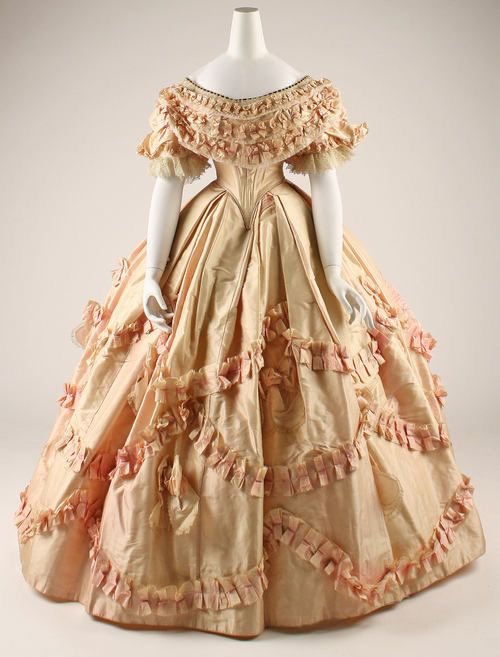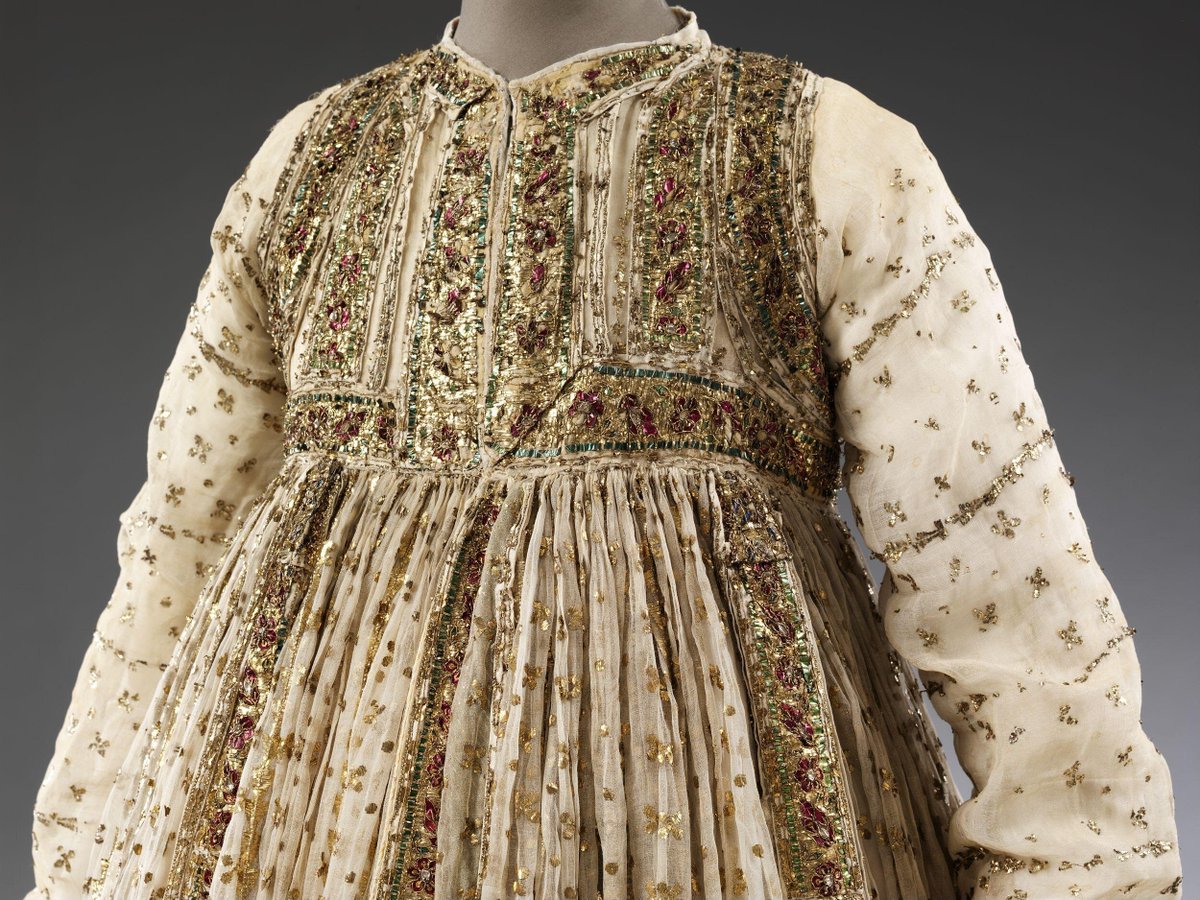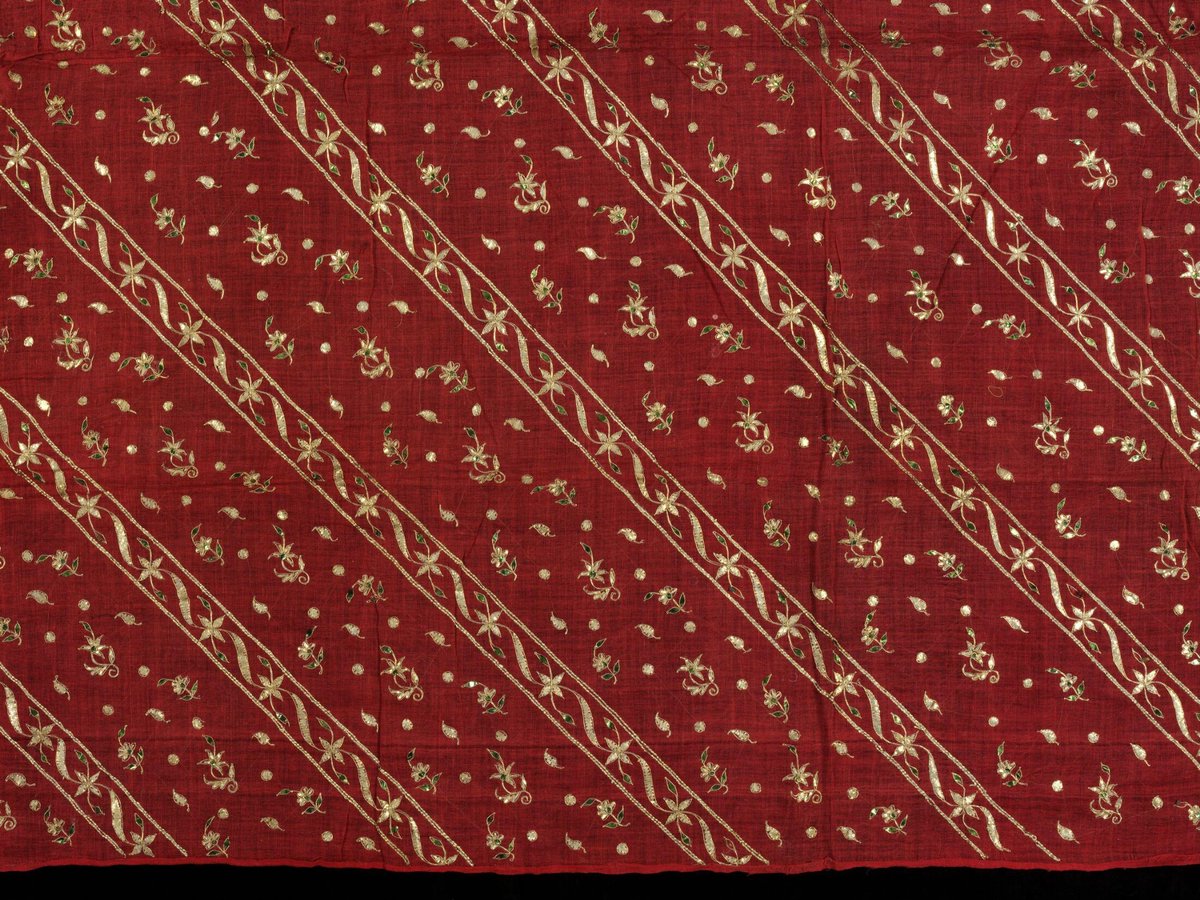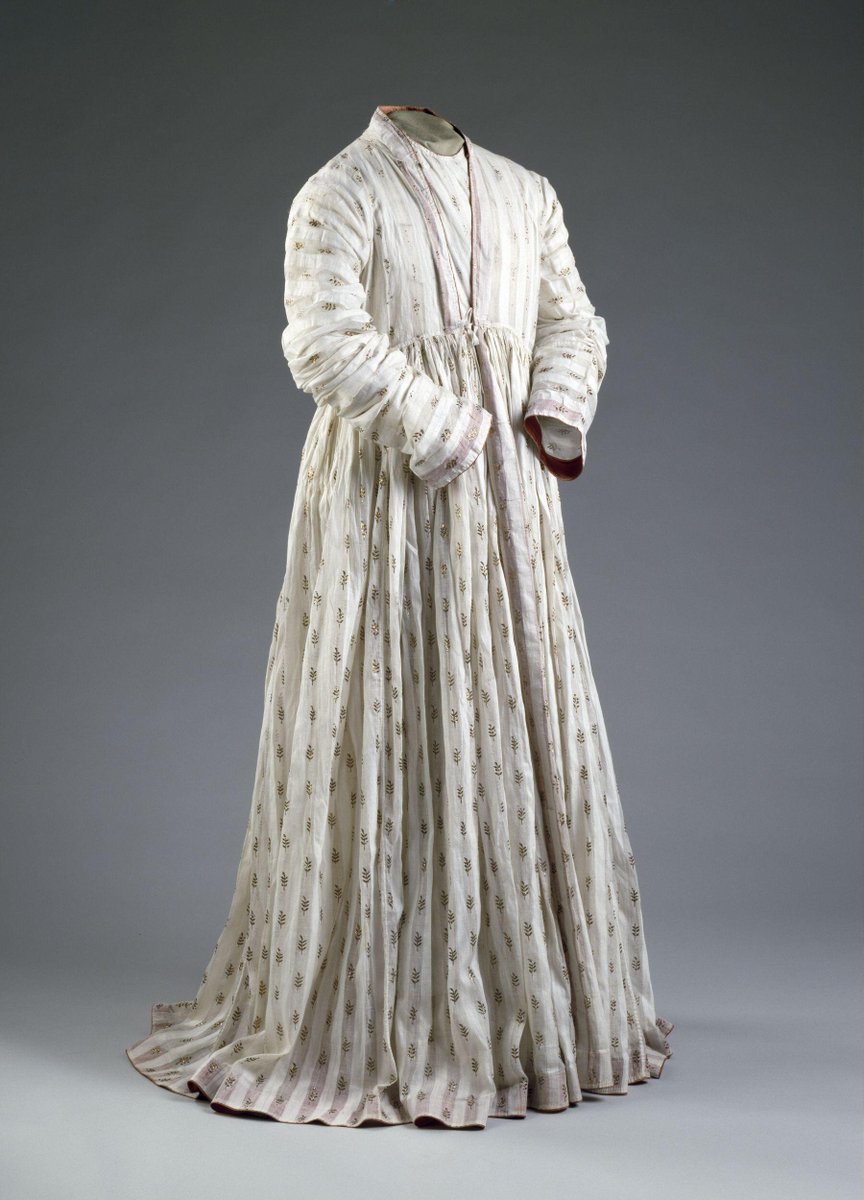
Y’all know that the 1850s and 60s are not my jam... BUT. In terms of dresses that look like Easter?
This is late 1868, and you can totally see the 1870s coming in the lines.
Also looks like it’s made of taffy (but it’s taffeta). Met museum.
This is late 1868, and you can totally see the 1870s coming in the lines.
Also looks like it’s made of taffy (but it’s taffeta). Met museum.

This one is similar but has more of that “fresh from the jello mold” look. I do like the pleats and the color scheme. 

This here is peak chiffon cake. And disjointed shoulders, like @ceruleancynic or @BursonGrace were saying yesterday. 

Then we get into the 1870s and it just starts to get better! This is muslin, too. And porcelain? Somewhere? Beads?
Very Easter. Very fresh.
Very Easter. Very fresh.

Here’s an earlier 1820, lovely ivory number in damask and satin. The embroidery is darling. Very springtime. Met museum. 

And a dress I would 100% wear, bows and all. 1836, Met museum.
Nothing says Easter like bumblebee yellow!
Nothing says Easter like bumblebee yellow!

• • •
Missing some Tweet in this thread? You can try to
force a refresh











